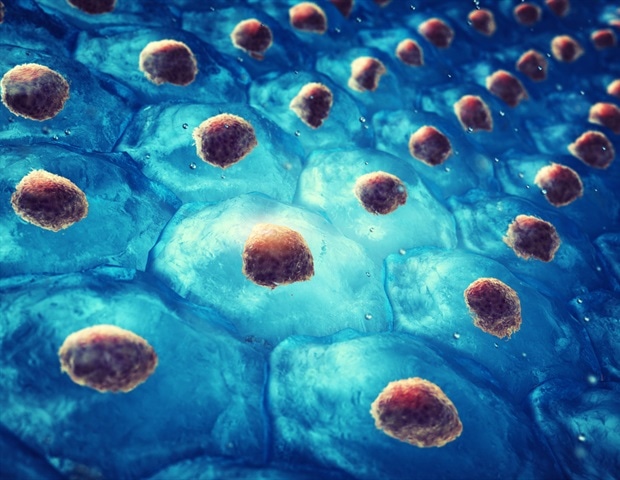Researchers at the University of Colorado Anschutz Medical Campus have discovered that amniotic fluid stem cells can be safely collected from vaginal fluid after childbirth rather than relying on more invasive methods that can pose some risk to the mother and fetus.
“We can then turn those cells into beating heart cells and use them later in treating congenital heart defects,” said the study’s senior author Jeffrey Jacot, PhD, associate professor of pediatrics and bioengineering at the University of Colorado Center for Bioengineering in the CU School of Medicine.
These results allow for an expanded and readily available source of amniotic stem cells beyond traditional collection through amniocentesis.”
Jeffrey Jacot, Associate Professor, CU School of Medicine
The study was published today in the journal Stem Cells Translational Medicine.
Amniotic fluid surrounds and provides cushioning, nutrients and growth factors to the developing fetus. It also contains numerous cell types originating from the fetus and fetal membranes. For decades, the clear fluid has been used as a way to detect fetal genetic anomalies. This was often done through amniocentesis, a routine but invasive procedure. It is often done during the second trimester limiting access of these stem cells to certain pregnancies, Jacot said.
These limitations prompted research into collecting amniotic fluid at the full term of a pregnancy.
Jacot and his team set out to see if they could collect and isolate amniotic fluid stem cells during vaginal deliveries. The stem cells could later be used to create tissue to repair genetic defects including heart defects in the baby.
They successfully collected samples from four vaginal deliveries with infants, three of whom were diagnosed in utero with hypoplastic left heart syndrome. The researchers then reprogrammed the amniotic stem cells into induced pluripotent stem cells and sorted them into functional cardiomyocytes.
“These findings suggest that amniotic fluid collected from vaginal births is a readily available source of patient-specific stem cells for banking, in vitro disease modeling, and regenerative medicine applications,” said Jacot.
He said the current method of treating some heart defects in infants involves up to three surgeries. Stem cells from amniotic fluid can be used to generate heart tissue in the lab.
“We think you can reconstruct a heart to a more typical structure if you have functional heart tissue you can put into it,” Jacot said. “These heart cells would then grow with the infant and hopefully reduce the number of surgeries.”
Source:
University of Colorado Anschutz Medical Campus
Journal reference:
Lennon, M. L., et al. (2025). Amniotic fluid collected from vaginal birth as a source of stem cells for clinical applications and disease modeling. Stem Cells Translational Medicine. doi.org/10.1093/stcltm/szaf017.
